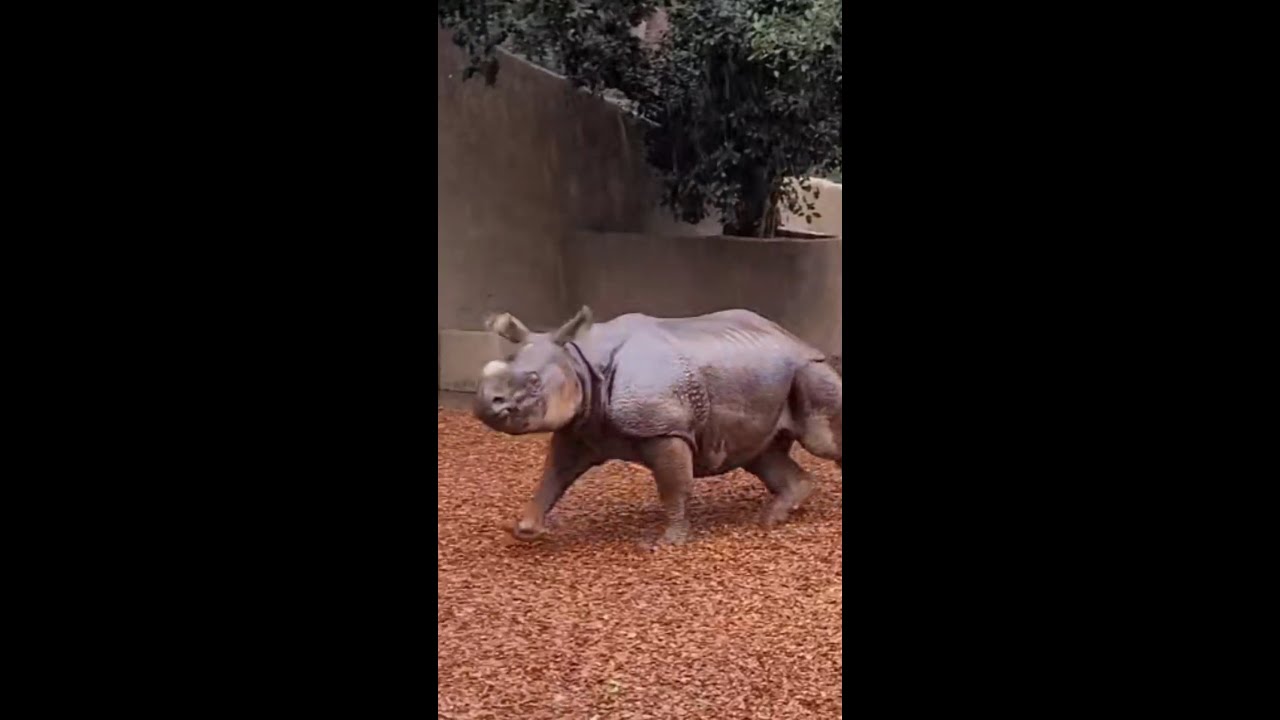- The behavior and psychological significance of Marshall the Rhino enjoying the rain.
- Zoological and environmental aspects of rhinoceros habitats and why they enjoy wet conditions.
- Importance of zoo management practices in providing environments that cater to animal behaviors.
- The role of wildlife conservation efforts in preserving rhinoceros species, focusing on education and research.
- The impact of public engagement and media on raising awareness for wildlife conservation.
In the vibrant, verdant expanses of African savannas, a unique behavior can be seen when the long-awaited rains descend—a behavior that Marshall, the beloved rhinoceros residing in captivity, also exhibits with unabashed enthusiasm. Observing Marshall play gleefully in the rain provides invaluable insights into the behavioral idiosyncrasies of these magnificent creatures. This article delves into the fascinating dynamics of why a massive creature like the rhinoceros would revel in rainy conditions, giving readers a window into their sophisticated behavioral repertoire.
Rhinoceros, native to Africa and Asia, thrive in habitats ranging from savannas and tropical forests to grasslands and shrublands. These ecosystems undergo transformations as the rainy season ushers in a period of rejuvenation. For rhinoceroses like Marshall, rain represents not only a sensory delight but also an ecological necessity. The falling water cools their massive bodies, cleanses their thick skin, and transforms the dry land into a nourishing haven. Like elephants and hippos, rhinos enjoy wallowing in mud, which becomes more accessible and abundant after rain. This behavior is not merely recreational; the mud acts as a natural sunscreen and insect repellent. The simple act of rolling and playing in the rain satisfies both biological needs and social interactions which are vital for their well-being.
Zoo management plays a critical role in fostering environments that allow animals like Marshall to express intrinsic behaviors. In the confines of a zoo, ensuring that animals receive stimuli that mimic their natural habitats is key. This includes designing enclosures that allow for the replication of natural weather patterns, including rain, whenever possible. Moreover, the presence of water features and mud pits can encourage natural behaviors and ensure physical comfort and mental stimulation for resident animals. Zoos employ climate control features and landscaping techniques that mimic seasonal transitions, providing animals with opportunities to engage with their environment as they would in the wild.
Wildlife conservation efforts must prioritize the preservation and enhancement of natural behaviors in animal populations both in captivity and in the wild. For rhinoceros populations under threat due to poaching and habitat destruction, conservation work is directed not only at protecting existing habitats but also at advancing breeding and rehabilitation programs in controlled environments. Captive rhinoceroses, like Marshall, often serve as ambassadors for their species. Their behavior and needs educate visitors about the importance of preserving their wild counterparts and safeguarding their habitats. Conservation programs often hinge on public support, which is garnered through presentations, interactions, and media portrayals of animals like Marshall displaying their natural behaviors.
Public engagement with wildlife is crucial in amplifying conservation messages. The widespread dissemination of videos and images showcasing an animal’s natural behaviors, such as Marshall’s gleeful frolics in the rain, captivate audiences and incite action. They bridge the gap between human communities and wildlife and challenge people to consider their role in environmental stewardship. Such media exposure not only raises awareness but also engenders empathy and support for conservation initiatives worldwide. Every view, like, and share increases the reach of these messages, potentially bolstering efforts to fund conservation projects and secure the future for endangered species.
Marshall, the rhinoceros who loves playing in the rain, symbolizes more than sheer delight. His actions reflect a complex array of needs and instincts deeply rooted in his species’ ecology. By understanding these behaviors and implementing appropriate zoo management practices, we can improve the quality of life for rhinoceroses in captivity. Additionally, each splash and roll serves as a reminder of the importance of preserving wildlife and environment not just within zoo walls, but across landscapes worldwide. This blend of education, conservation, and public engagement holds the key to safeguarding our planet’s incredible biodiversity, inspiring a shared commitment to nurturing it for future generations.
*****
Source Description
Marshall loves playing in the rain! 🦏🌧️
Greater one-horned rhinoceroses often spend most of their day bathing, wallowing, and swimming in water.
#Rhino #Rain #RainyDay
📹: Jennifer Stavish


